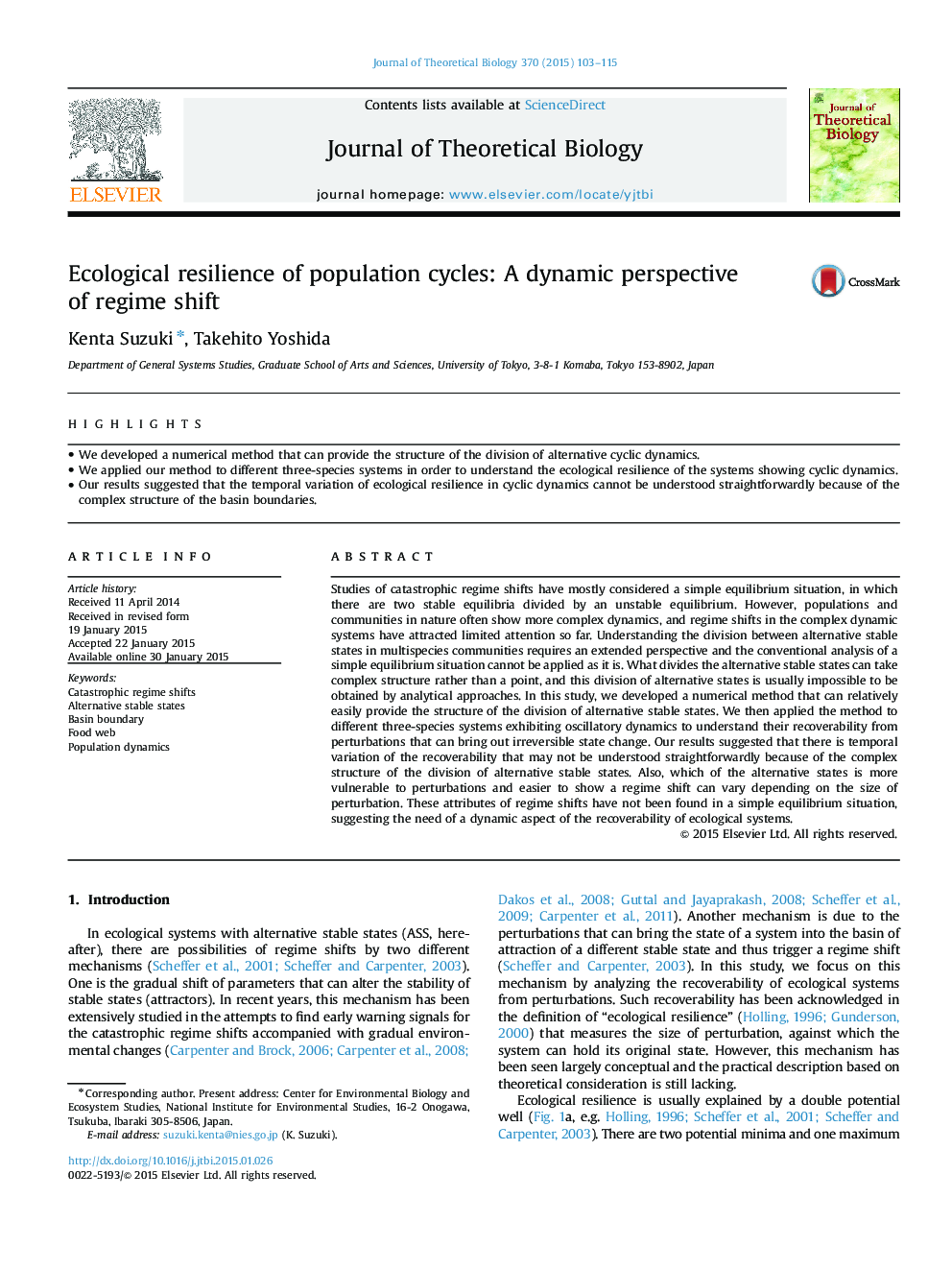| Article ID | Journal | Published Year | Pages | File Type |
|---|---|---|---|---|
| 6369921 | Journal of Theoretical Biology | 2015 | 13 Pages |
Abstract
Studies of catastrophic regime shifts have mostly considered a simple equilibrium situation, in which there are two stable equilibria divided by an unstable equilibrium. However, populations and communities in nature often show more complex dynamics, and regime shifts in the complex dynamic systems have attracted limited attention so far. Understanding the division between alternative stable states in multispecies communities requires an extended perspective and the conventional analysis of a simple equilibrium situation cannot be applied as it is. What divides the alternative stable states can take complex structure rather than a point, and this division of alternative states is usually impossible to be obtained by analytical approaches. In this study, we developed a numerical method that can relatively easily provide the structure of the division of alternative stable states. We then applied the method to different three-species systems exhibiting oscillatory dynamics to understand their recoverability from perturbations that can bring out irreversible state change. Our results suggested that there is temporal variation of the recoverability that may not be understood straightforwardly because of the complex structure of the division of alternative stable states. Also, which of the alternative states is more vulnerable to perturbations and easier to show a regime shift can vary depending on the size of perturbation. These attributes of regime shifts have not been found in a simple equilibrium situation, suggesting the need of a dynamic aspect of the recoverability of ecological systems.
Related Topics
Life Sciences
Agricultural and Biological Sciences
Agricultural and Biological Sciences (General)
Authors
Kenta Suzuki, Takehito Yoshida,
